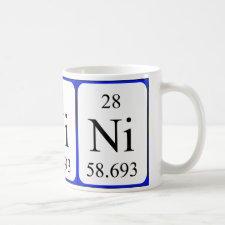
Authors: Wei XP, Liang SC, Huang WG, Li JP
Article Title: Study on Molecularly Imprinted Sensor Based on Photocurrent Response for Ni-complex.
Publication date: 2016
Journal: Chinese Journal of Analytical Chemistry
Volume: 44
Issue: (3)
Page numbers: 348-354.
DOI: 10.1016/S1872-2040(16)60912-X
Alternative URL: http://www.sciencedirect.com/science/article/pii/S187220401660912X
Abstract: A novel molecularly imprinted sensor based on photocurrent was fabricated to detect Ni2+. CdTe quantum dots (QDs) were selected as photoelectric material and modified on an indium-tin oxide (ITO) electrode, then the nickel-1-(2-pyridylazo)-2-naphthol molecularly imprinted film was formed on the QDs layer by photopolymerization. While 365 nm ultraviolet light was used as the excitation light, an electron-hole pair could be generated by the QDs. The electron receptor ascorbic acid would form a photocurrent under the excitation of the electron as detection signals. Ni2+ was determined according to "gate-effect". The complex was characterized by Fourier transform infrared spectrum and the CdTe QDs were characterized by ultraviolet absorption spectrum and fluorescence emission spectrum. The time for elution and rebinding, as well as the concentration of ascorbic acid, were also optimized. The experimental results indicated that there was a liner relationship between the photocurrent and the concentrations of Ni2+ in the range of 5 x 10-11 - 5 x 10-8 M, with a detection limit of 8.31 x 10-12 M. The sensor had good selectivity, and was applied in real water samples analysis
Template and target information: nickel ion, Ni(II)
Author keywords: Molecularly imprinted sensor, photocurrent, Nickel-1-(2-pyridylazo)-2-naphthol, quantum dot, nickel ion



Join the Society for Molecular Imprinting

New items RSS feed
Sign-up for e-mail updates:
Choose between receiving an occasional newsletter or more frequent e-mail alerts.
Click here to go to the sign-up page.
Is your name elemental or peptidic? Enter your name and find out by clicking either of the buttons below!
Other products you may like:
 MIPdatabase
MIPdatabase









